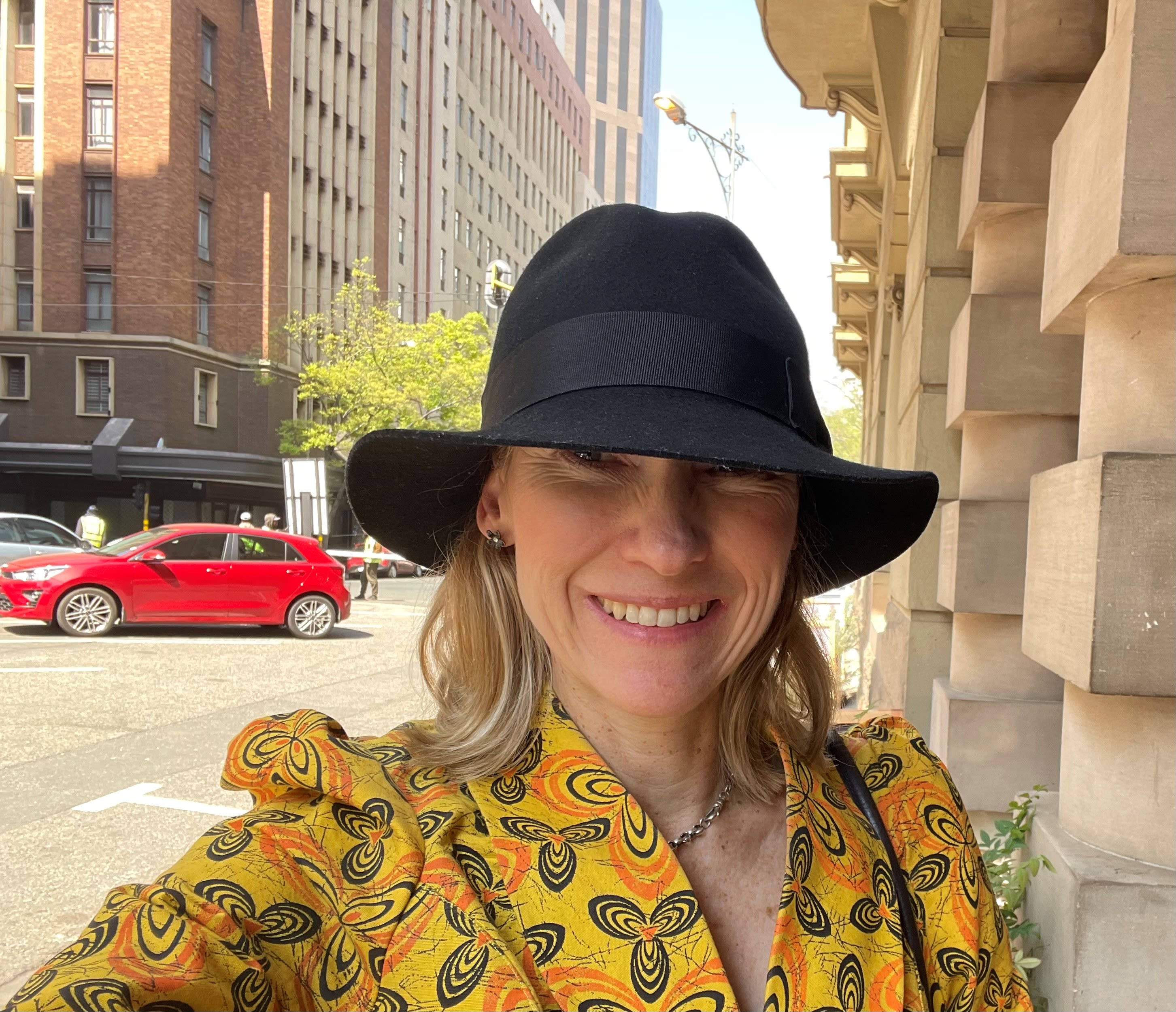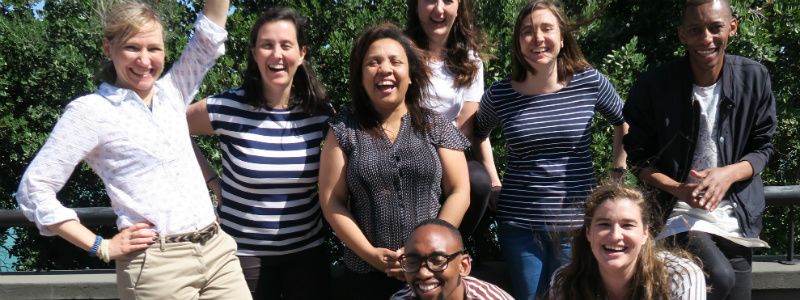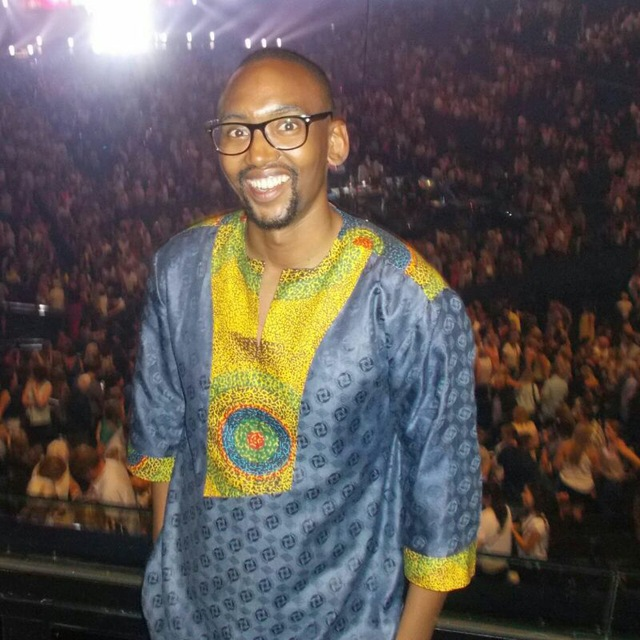Diversity in academic publishing: How can publishers help repair the 'leaky pipeline'?
By Leah Kinthaert

Our corporate diversity statement at Taylor & Francis states: "T&F’s very purpose is founded on diversity and inclusion: it is an essential element of curating, substantiating, and publishing the experts and truths that matter."
Indeed, studies have shown that diverse researchers bring unique perspectives and innovation. And a 2022 study which examined 6.6 million papers even shows that gender diverse teams produce papers that are more highly cited! Groups of researchers with greater diversity in terms of gender, race, ethnicity, geographic location, and socioeconomic standing may: "ask a broader range of questions, utilize more varied methods and tackle problems from a wider range of perspectives."
We sat down with four people who work at Taylor & Francis – Editor Elizabeth Cox, Global Portfolio Director Janet Remmington, and Portfolio Managers Reagan Rodriguez and Mokheseng Buti – to ask them in their own words why they think researcher diversity is important, and what we are doing as publishers to improve it.
Elizabeth Cox, Editor, Taylor & Francis
Editor Elizabeth Cox describes what she sees as the current atmosphere in academic publishing: "There’s definitely more conversation around diversity than there was when I first entered the industry five years ago. In terms of meaningful action/change, I think that will take longer. We also need to be mindful of treating DE&I as a box-ticking exercise or hot topic which we’re able to address now and then move on from. However, T&F has a long-standing reputation for leading the way when it comes to advancing new avenues of research and lesser-known or -published voices, particularly in our research books, so I think we’ve got a great head start."
We also need to be mindful of treating DE&I as a box-ticking exercise or hot topic which we’re able to address now and then move on from.
"As a Commissioning Editor, I think a lot of responsibility does fall on Editorial to ensure not only that we are publishing diverse content, but that we are seeking out people from diverse backgrounds to write and review our books (and journals). Given the lack of diversity in academia as a whole, it’s even more imperative that we look beyond more closed-ended routes to acquiring content (i.e. running open ‘how to get published’ sessions for junior scholars, as opposed to armchair calling on senior faculty at ‘red brick’ type institutions) so that we ensure we’re engaging with authors whose output may not be staring us in the face."
Cox describes what her role in increasing researcher diversity looks like: "I’m part of a focus group looking to improve DE&I in the approach taken by the Books Editorial team. We’ve put together a range of resources which are being rolled out across the department to help make equitable and inclusive working practices more transparent and ingrained in our day-to-day roles."
"My personal part in this has been collating a database of professional bodies who advocate for DE&I in their subject areas – associations like Black British Academics, Professors Without Borders, and the National Association of Hispanic Journalists – which Editorial staff can turn to when looking for new authors, reviewers, or subject areas. I’ve also helped assemble a survey which commissioning editors can complete to help them think critically about the diversity of the titles they’re signing and build a picture of how this might be changing over time."
"A recent success story for me was seeing Jessica Retis, one of the co-editors of Reporting on Latino/a/x Communities (May 2022), being appointed Director of the School of Journalism at the University of Arizona. Jessica has done a lot in terms of advancing research around Latin American media, migration, diasporas, transnational communities, and bilingualism, including serving as the Academic Officer for the National Association of Hispanic Journalists, and this is a really positive step for the department."
Janet Remmington, Global Portfolio Director, Taylor & Francis
Global Portfolio Director Janet Remmington adds to the explanation of why research has a diversity problem: " (Lack of researcher diversity) is a major research topic in itself – the focus of many studies. The research landscape has historically been dominated by well-funded institutions in the industrialized Global North, with a high proportion of white male academics. However, this is changing, and the global picture is far more variegated in terms of contributions and credence than is often recognized. Chinese and Indian outputs stand out as the major disruptor at scale to Western dominance. And, overall, the global research community is active, engaged, and participating in myriad ways across traditional divides and often in resource-constrained or at-risk environments, if not necessarily hitting the headlines."
Remmington offers a recent example of where researchers from the Global South have beat the odds and achieved visibility for their work: "Sometimes, however, research from outside the historic Euro-American research heartlands gains top spot and points to the presence of the lesser-known work done in labs, among communities, and across the universe of ideas. In some cases, this research captures and changes the world, but not without significant challenges. A case in point is the COVID-19 genomic research undertaken by Tulio de Oliveira in South Africa and Sikhulile Moyo in Botswana, named as two of Time Magazine’s most influential people of 2022."
Research cultures of sameness cannot penetrate the intractable problems of our age.
"Global research is by no means a level playing field. We have a way to go to ensure voices from across all research communities are being heard. Clearly, there is so much more to be done to attain greater equity and opportunity for all across boundaries of nation, gender, race, sexuality, disability, socio-economic status, and other factors. We need more inclusion of diverse researchers in order to optimize discoveries, insights, and solutions. Research cultures of sameness cannot penetrate the intractable problems of our age."
Remmington illustrates some of the work she's doing to increase researcher diversity at Taylor & Francis, and the progress being made: "Last year, I co-led a Humanities and Social Sciences (HSS) DE&I Working Group, out of which we developed a key objective to increase diversity, equity, and inclusion across a range of our journals. This encompassed reviewing editor and editorial board structures, peer review networks, author communities, aims and scope remits, decision-making processes, and range of publishing formats and venues. Each Portfolio Manager assessed their particular journal title lists for needs and opportunities, working with editors and societies to develop strategies and plans to deliver change."
"There is a lot to do. Opening up the publication world for a diversity of researchers is a key Taylor & Francis focus, working with our society and industry partners. I'll highlight a few areas of attention, though there are many more: providing information and resources on the research and publication lifecycle, including hosting online webinars, see e.g. Author Services | How to publish a journal article - step by step guides (taylorandfrancis.com); proactively contributing to academic and industry DE&I initiatives (including Coalition for Diversity and Inclusion in Scholarly Communications and the RSC Joint Commitment for Action on Diversity and Inclusion in Publishing); and, lastly, creating programs to advance and accelerate diversity, equity, and inclusion within and across our publication portfolios."
Reagan Rodriguez, Portfolio Manager, Taylor & Francis
Reagan Rodriguez, Portfolio Manager, Taylor & Francis, points out what she calls a "leaky pipeline" for researchers of color: "A study from JAMA found in their sample of Editors in Chief in some of the leading scientific and medical journals that people of color make up less than 23% of the EiC population. Other data for the publishing industry, whether it be in academic journals or books, shows a leaky pipeline for researchers of color, even more so for folks with intersectional marginalized identities (women scholars, LGBTQIA+ scholars, first generation scholars, and scholars from low socio-economic backgrounds). This tends to start early, before a researcher entertains the idea of submitting a manuscript, when they are still early in their academic career, either as a recent PhD graduate or a current student."
"I think it is easy to forget that, historically, these institutions were not built for a diverse research community, and it has taken the literal blood, sweat, and tears of students and scholars of color to even be welcomed in the same study halls, or for culturally competent pedagogies to be taken seriously. We are still living with the remnants of that systemically designed structure within our institutions, both in the academy and publishing houses, especially in the North American context. Contemporary structures of academia have a lot of work to do in terms of facilitating a working environment that is not just competitive but focuses on constructive criticism and scholarly growth, as opposed to weeding students out of programs, or not supporting professors whose work focuses on diverse pedagogies."
"Publishers are embedded in the academic ecosystem and therefore must understand our roles in knowledge production and have a responsibility in contributing to the growth of a diverse research community."
It has taken the literal blood, sweat, and tears of students and scholars of color to even be welcomed in the same study halls, or for culturally competent pedagogies to be taken seriously.
Rodriguez provides some pointers on how to make much needed change: "As publishers, I would like to see us expand and dedicate more resources for projects that look more in depth at the make-up and diversity of our editorial boards across disciplines – especially more statistics for the EiCs and Associate Editors. Making policies that lend to transparency are a good start – such as making open calls for editors mandatory and strongly encouraging society owned journals to do the same as a part of scholarly ethics. I believe collaborating more with the editors who are committed to a constructive and equitable review process is crucial in bettering our modus operandi."
"My roles as both a portfolio manager and the race and ethnicity subject lead might not initially seem intertwined, but issues surrounding diversity and inclusion are not siloed to a role, department, or one specific work environment. Working in both roles, this translates to thinking of these long-term processes with other publishing professionals and researchers, as opposed to quick one-off solutions, because these issues are systemic. Specifically, this means having these conversations with my editors consistently on how diversity enters the editorial processes, talking with them about transparency and ethics, and communicating about how well-intentioned policy measures might impact the learning of diverse scholarship in the future."
"The last point on policy is something I am actively working more on and of course just understanding and listening to what has not worked in the past in conversations with other portfolio managers and folks across editorial. In my role as a subject lead, the listening continues. This also includes disrupting biases, sitting with empathy, taking accountability, and doing the work in contributing to an inclusive environment that is also equitable for career mobility."
As a first-generation scholar from an immigrant family where education was highly prioritized, I like to take a step back and acknowledge that I benefitted from the labor and organizing of scholars and activists before my time.
"Seeing more editorial board members, educators, and publishing professionals across disciplines embrace the work of diversifying scholarship has been encouraging. That these conversations are not only happening but loudly making waves across knowledge production is an important start. As a first-generation scholar from an immigrant family where education was highly prioritized, I like to take a step back and acknowledge that I benefitted from the labor and organizing of scholars and activists before my time. Yet, having diverse scholars in the room, submitting their work, and being part of the editorial process should be the baseline, not the end goal."
Mokheseng Buti, Portfolio Manager, Taylor & Francis
Mokheseng Buti offers his perspective on the current state of diversity initiatives at Taylor & Francis: “I think there’s a lot more that’s happened in the past three years than has happened, at least before I joined the company five years ago. It’s true that we can always find good even in the worst situations. Although there were a lot of difficulties that emanated from the pandemic, inequalities that had always existed came into the limelight during the pandemic, I’m not sure why. Perhaps people were fed up.”
What's taken place is the creation of an atmosphere that allows conversations to be had.
“In all honesty, I’m not sure if we would have become as comfortable as we’ve become in discussing issues of inequity and other related issues (pre-pandemic). I’m proud of the strides we’ve made on this point. Change will stem from the internal and external conversations that can be had by all T&F stakeholders."
"I think what’s taken place is the creation of an atmosphere that allows conversations to be had. And this has been done by setting up teams of people responsible to help drive the DE&I agenda. Because of these conversations, we’re also in hindsight raising awareness for all stakeholders both internally and externally.”
“In my role as a portfolio manager, I deal with editors, publishing partners, authors, different departments within T&F, and potential customers. Once your eyes have been opened to issues of DE&I, it becomes easy to incorporate a DE&I focus in the appointment process. As a result, I may be forced to think about the journal’s history, whether it’s traditionally appointed editors of similar profiles, the journal’s future, and the direction we want to take. Suddenly, appointing an editor becomes a rich experience that is thoughtful and encompassing of pertinent issues that help to promote DE&I in scholarship.”
We need to keep our ears to the ground, listen to the needs of our current and future researchers, and be agile in our approach to addressing issues of diversity for researchers.
Buti continues: “We can all understand inequality, but usually, we understand it from our own perspectives. As a Black man based in Africa, my perspective of inequality could be limited to what I’ve been exposed to; however, because of different conversations, people I encounter, and their diverse experiences and geographies, naturally, my perspective has broadened, and I've begun to realize that inequality comes in many shapes and forms, and that it affects many different people."
"Specifically looking at the issue of creating opportunities for authors, throughout this year, I’ve been coordinating a project with The Conversation Africa that is focused on promoting African research. Through this partnership, we’re seeing different authors from different institutions and regions publish news articles about their research. While we can’t influence the editorial process followed by TCA, we’re also trying to encourage authors to send their pitches to promote their work via TCA. In a project of this nature, research is rated on its merit, and thus researchers may be able to promote their work despite their influence or lack thereof. While it’s a great concept, it isn’t perfect: I’ve learnt that not all authors realize the need to promote their work, so even sending a pitch to TCA may feel like an added layer of work." You can read more about The Conversation Africa partnership here.”
“I think we’re on the right track, and that this particular project has opened the door to finding new and creative ways for promoting Africa-related research, and thus promoting authorship diversity. Outside of this, as a commercial publishing house, we need to keep our ears to the ground, listen to the needs of our current and future researchers, and be agile in our approach to addressing issues of diversity for researchers, as it’s through our researchers that we will have insight into what needs to be worked on.”

Gender is just one aspect of identity that could bring diverse perspectives to a wide range of scientific disciplines.
Gender is just one aspect of identity that could bring diverse perspectives to a wide range of scientific disciplines.

Elizabeth Cox, Editor, Taylor & Francis
Elizabeth Cox, Editor, Taylor & Francis

Janet Remmington, Global Portfolio Director, Taylor & Francis
Janet Remmington, Global Portfolio Director, Taylor & Francis

Janet Remmington leads up our Taylor & Francis Africa Team. From left to right: Janet Remmington, Hazel Dickens, Deidre Mvula, Mokheseng Buti, Salomé Teuteberg (now works at Research Labour Service), Vicky Truter, Eleanore Reinders, Oscar Masinyana.
Janet Remmington leads up our Taylor & Francis Africa Team. From left to right: Janet Remmington, Hazel Dickens, Deidre Mvula, Mokheseng Buti, Salomé Teuteberg (now works at Research Labour Service), Vicky Truter, Eleanore Reinders, Oscar Masinyana.

Reagan Rodriguez, Portfolio Manager, Taylor & Francis
Reagan Rodriguez, Portfolio Manager, Taylor & Francis

Mokheseng Buti, Portfolio Manager, Taylor & Francis
Mokheseng Buti, Portfolio Manager, Taylor & Francis
You might also like:
Social justice and sustainability
Find out about the content we publish, commitments we've made, and initiatives we support related to social justice and sustainability:
 China
China Africa
Africa
